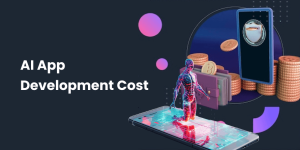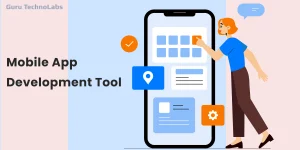Top 16 Mobile App Development Trends Every Business Should Watch

Mobile app development is an emerging market like never before. It is expected to hit a whopping $407.31 billion by 2026 at a CAGR of 18.4%. You read that correctly, at one point, the likes of Amazon, YouTube, and Netflix were startups.
But have you ever thought about what fueled their sudden success?
This is because they are constantly innovating and adapting to new trends and user demand. Successful mobile apps are not one-off solutions, so their functionality, performance, and user experience always evolve.
For a business owner who is looking to take your digital transformation strategy to the next level, it is a necessity to know the latest trends in app development. From AI and augmented reality to enhanced security features and cross-platform technologies, the future of app development has some exciting avenues. If you want to have success in your next app, it is the right time to get familiar with the trends defining the industry.
This blog will discuss the top mobile app development trends you need to keep an eye on. Read on, and freshen up your strategy.
Top 16 Mobile App Development Trends That Will Dominate 2025
With the year 2025 on the horizon, mobile app development is changing faster than ever. As businesses always want to be competitive and deliver the latest user experience, there’s a need to keep abreast with new trends.
And the quick developments in technology — be it AI or machine learning or immersive AR/VR features — are transforming the way apps are designed, developed and used. To succeed in this fast-paced environment, gaining knowledge about the main trends taking over the industry is crucial.
1. AI and Machine Learning
Gone are the days of AI and ML being the people beginning the era of buzz words — they drive innovation in mobile app development. Artificial Intelligence is used in everything from chatbots to image recognition, and ML enables apps to customize the user experience, learning from behaviors and improving over time.
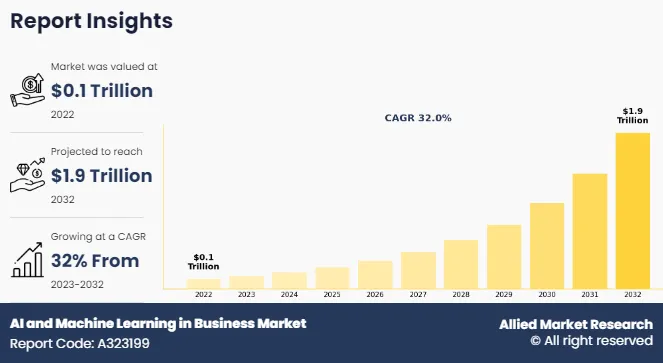
Source: Allied Market Research
- For example, apps like Netflix leverage AI to offer personalized content recommendations, ensuring users remain engaged for longer periods.
- What’s even more exciting is how AI and ML are now shaping industries beyond entertainment.
- In the medical field, AI-powered healthcare app development can assist with diagnostics, monitor patient vitals, and even predict health trends.
The impact on customer support is equally profound, with machine learning enhancing chatbots to handle more complex inquiries. As AI continues to improve, the scope of its potential in mobile apps expands, creating more adaptive experiences for users.
2. IoT-enabled Mobile Applications
The Internet of Things (IoT) is revolutionizing how mobile apps interact with the physical world. IoT-enabled mobile applications allow users to control and monitor devices like smart home appliances, wearables, and even health-monitoring gadgets directly through their smartphones.
These apps are becoming crucial in industries like healthcare, manufacturing, and home automation, where real-time monitoring and control of devices are key.
Here’s a quick look at how IoT is taking over the market:
| Industry | IoT Application Example | Market Value (2025) |
|---|---|---|
| Healthcare | Remote patient monitoring apps, wearables, and sensors | $12.3 billion |
| Smart Homes | Home automation systems integrating IoT (e.g., Nest) | S$55.0 billion |
| Retail | Smart inventory management and in-store navigation | $94.0 billion |
With IoT, businesses can create innovative apps that not only collect and analyze data but also allow users to control their environment seamlessly. As IoT becomes increasingly accessible, mobile apps will enable smarter integrations with everything from cars to kitchen appliances, changing the way we live and work.
3. Voice Recognition and Command
Voice recognition is no longer a novelty, it’s a mainstream feature that’s becoming more intuitive every day. Top voice applications like Google Assistant, Siri, and Alexa have pioneered a new generation of voice-based interaction as a component of user experience across many devices.
For example, voice recognition enables hands-free control, useful in contexts where multitasking is common, such as driving or cooking.
Banks, for example, are now integrating voice recognition apps into their banking applications so that users can check balances or make payments without needing to touch their phones. As the popularity of smart home technology grows, voice control is an increasingly important interface for also things we do every day, from controlling home appliances to managing busy schedules.
4. Cloud Computing
In recent years, cloud computing has been a transformative trend that has significantly impacted the mobile app development landscape. It refers to the practice of using remote servers hosted on the Internet to store, manage and process data instead of relying on local servers.
Its ability to support rapid app deployment, improve scalability, reduce costs, and enhance collaboration makes it an attractive option for businesses of all sizes.
This technology enables mobile apps to access and utilize vast computing resources, databases, and services, all delivered through the Internet.
Businesses must consider cloud-based app development to ensure seamless functionality, security, and scalability, allowing them to deliver high-performing and user-friendly apps in an increasingly competitive market.
5. Super Apps
Super apps are killing it abroad in places like Asia; apps like WeChat and Grab, combine messaging, shopping, payments, and even ride-hailing within one app. Yes, their success is obvious – users can find all they want without switching between dozens of apps, thus, providing a great user experience.
Super apps are catching on beyond Asia, as well. Mobile app usage has been growing steadily in countries like the USA, more businesses are attempting to consolidate multiple services in one application.
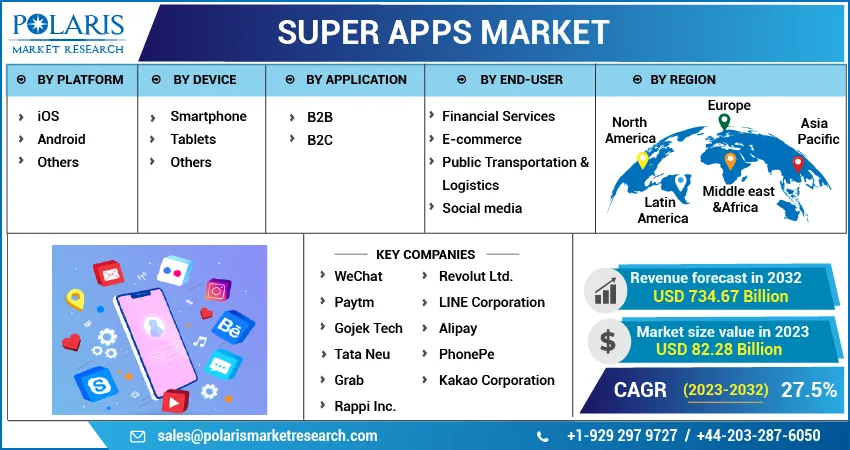
Source: Polaris Market Research
Here are some popular examples of super apps:
- Alipay
- Gojek
- Line
- Paytm
- Zale
- KakaoTalk
- Rappi
Businesses that build super apps can attract diverse customer bases by offering a variety of functions, from eCommerce and banking to social networking – all integrated into one platform.
6. On-demand App Development
The on-demand economy is reshaping industries, from transportation and food delivery to grocery delivery to healthcare and even home services.
On-demand apps like Uber, Doordash, Zomato, Instacart, etc. are popular examples of how businesses are offering instant and convenient solutions with just a few taps on a smartphone.
These apps allow customers to access services at their convenience, which leads to higher satisfaction and retention. The demand for on-demand app development continues to rise and this trend is expanding into more specialized industries. For instance, on-demand food delivery apps allow users to order food from their favorite restaurant virtually in minutes.
In addition, sectors like home services and tutoring are seeing rapid growth in on-demand apps. As consumers continue to prioritize convenience, on-demand solutions are becoming essential for businesses that want to remain competitive.
7. Metaverse and Digital Twins
The concept of Metaverse is gaining considerable attention, with companies like Meta (formerly Facebook) investing heavily in virtual spaces. Mobile apps are one of the safest features that can help users experience the nature of this digital domain as the Metaverse allows the users to engage in completely interactive virtual habitats.
With the boundaries between reality and the virtual world blurring, the number of apps that enable variant forms of shopping, socializing, or even global tourism is on the rise.
Another thrilling advance is the emergence of digital twins — virtual copies of physical things or environments that can be engaged with in real time. Virtual tours of a property using digital twins are now even allowing real estate apps to show people a property before they even set foot there.
This innovative technology is transforming the way businesses develop products, deliver services, and manage customer experiences, providing a fundamentally different level of immersion within physical and virtual environments.
8. Mobile Wallets
Mobile wallets have become the most common method for consumers to pay, providing a fast, safe, and convenient way to make a transaction.
Apps such as Apple Pay and Google Wallet let users store credit cards, debit cards, and even cryptocurrencies. Mobile wallets are now becoming more than just vehicles for payments; they are becoming platforms where a user can hold tickets, loyalty cards, and anything else; they’re streamlining your entire financial life.
The digital wallet users are expected to grow to over 5.2 billion by 2026, with increasing adoption across all age groups. Businesses that implement mobile wallet functionality not only offer convenience to customers but can also integrate loyalty programs and digital coupons to enhance customer engagement.
9. mCommerce
Mobile commerce, or mCommerce, has become a driving force in the retail world. Apps that enable users to shop directly from their phones have seen exponential growth.
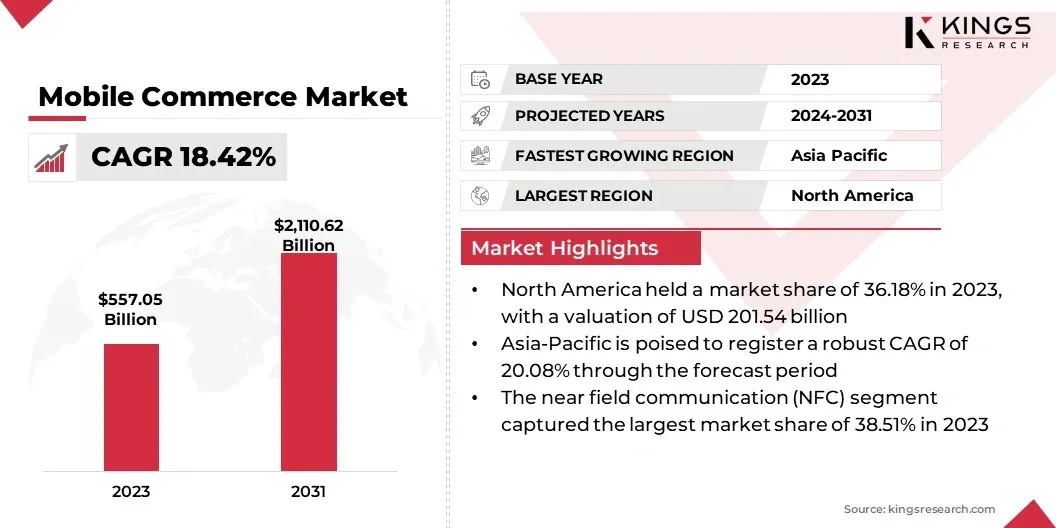
Source: Kings Research
The convenience of browsing products, reading reviews, and checking out with just a few taps is a key reason why mCommerce is projected to grow at a CAGR of 20.5% from 2024 to 2030.
What’s exciting about mCommerce is the integration of personalized experiences, such as personalized recommendations, location-based offers, and AR-based product try-ons. As mobile shopping becomes the go-to method for purchases, businesses will need to optimize their apps for seamless navigation, payment processing, and customer support.
10. Touchless UI
Touchless user interfaces (UI) are ushering in a new era of mobile app interaction. Instead of relying solely on touch, apps are now using technologies like gesture control, facial recognition, and voice commands to make interactions more seamless.
This trend was accelerated by the global pandemic, but even as things return to normal, the demand for touchless interfaces remains strong due to their convenience and hygiene benefits.
For businesses, integrating touchless technology into mobile apps offers an opportunity to create innovative, hands-free experiences that appeal to a wide range of users.
11. Low Code/NoCode
The rise of low-code and no-code development platforms is democratizing app building. These platforms allow non-technical users to build and deploy apps without writing any code, making it easier for businesses to create custom solutions quickly and affordably.
The low-code/no-code market is anticipated to reach $45.5 billion by 2025, demonstrating the growing demand for tools that simplify app development.
This trend is particularly appealing for small businesses and startups, which may not have the resources for extensive in-house development teams. With low code and DIY platforms, these businesses can create functional apps that meet their specific needs without the time and financial commitment of traditional development.
As these platforms continue to improve, expect to see even more sophisticated apps being created with minimal technical experience.
12. Beacon Technology
Beacon technology is enhancing the way businesses interact with their customers in physical spaces. Beacon uses Bluetooth to send targeted notifications and promotions to user’s smartphones based on their location.
Retailers, for example, can use beacon-enabled apps to alert customers of special deals when they are nearby, encouraging them to make a purchase.
Beyond retail, beacons are making an impact in industries like tourism and events. Museums, for instance, use beacons to provide visitors with contextual information as they move through exhibits, creating a more personalized experience. As beacon technology becomes more widespread, businesses can leverage it to drive engagement and sales by providing users with real-time, location-based offers and experiences.
13. 5G Technology
5G Technology is set to revolutionize mobile app development by offering faster download speeds, lower latency, and more reliable connections. This opens doors to new possibilities, such as high-definition video streaming, AR/VR apps, and cloud gaming, all of which require stable and fast internet connections.
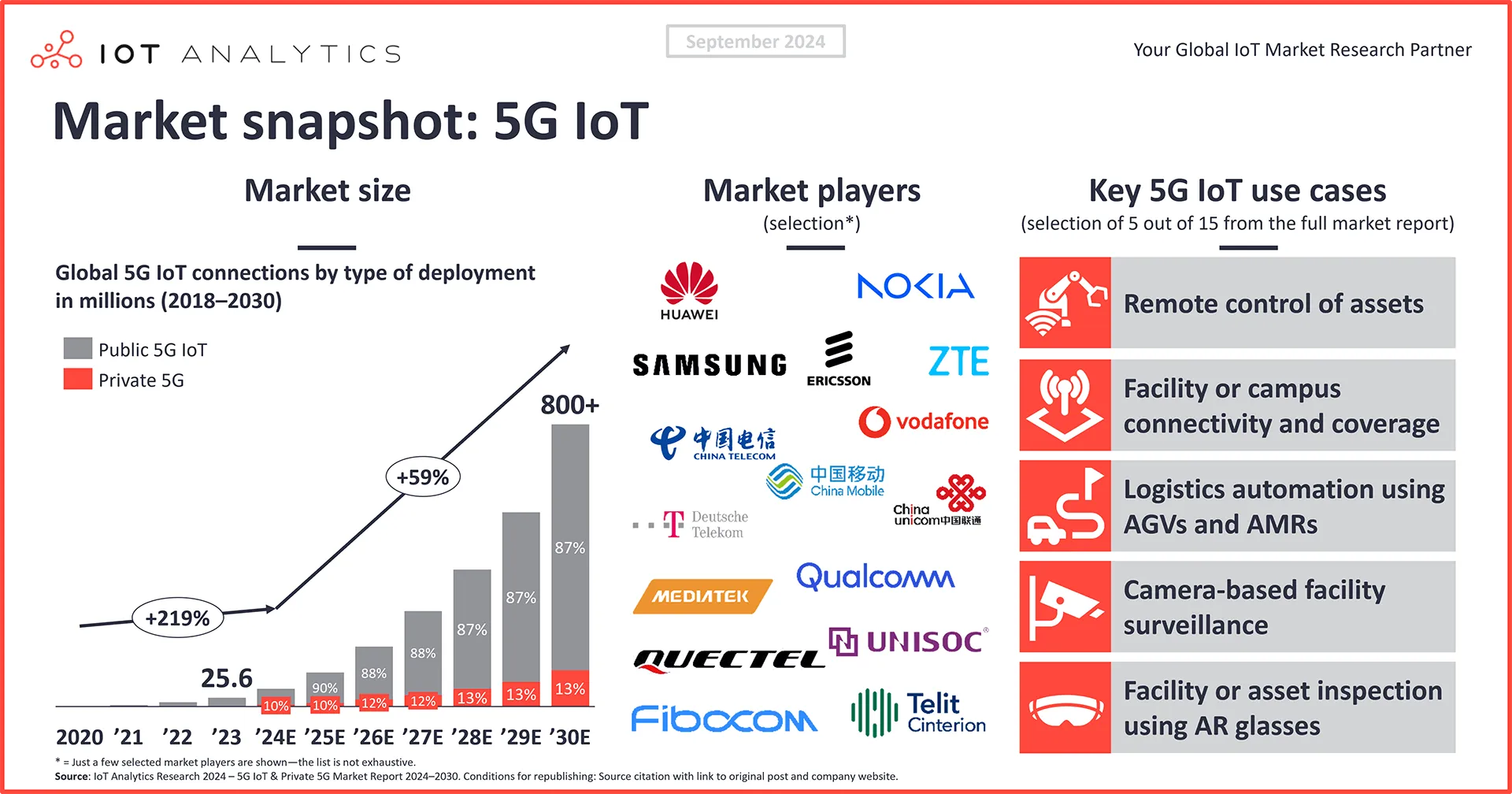
Source: IoT Analytics
With 5G, apps can deliver more immersive experiences, stream data-heavy content, and offer instant connectivity, making it far more responsive.
As more cities and regions roll out 5G infrastructure, the demand for mobile apps that can leverage the new technology will increase.
14. Extended Reality (XR)
Extended Reality (XR), which encompasses VR, AR, and mixed reality (MR), is dramatically changing the way we experience mobile apps. Whether it’s shopping, gaming, or education, XR offers a new level of interaction that traditional apps can’t match.
With augmented reality, for instance, users can try on clothes virtually or place furniture in their living rooms before making a purchase. The XR market is growing rapidly, with expected revenues reaching over $519.5 billion by 2025. This growth is being driven by increased consumer demand for immersive experiences.
Businesses that embrace XR in their mobile apps will have an edge, providing users with experiences that are engaging, educational, and interactive.
15. Apps for Foldable Devices
Samsung and Apple are leading the charge in foldable devices, and with these devices, app developers have the opportunity to rethink the mobile experience.
Foldable phones offer users larger screens when unfolded, enabling apps to take full advantage of the added space by providing enhanced multi-taking features, richer content, and improved navigation.
Developers are now optimizing their apps to adjust dynamically to the foldable screen, ensuring users enjoy a seamless experience whether the device is open or closed.
As foldable technology matures and gains broader adoption, expect to see more innovative apps designed specifically for these devices, transforming how users interact with mobile apps and unlocking new use cases for both productivity and entertainment.
16. Wearable Technology
Wearables have evolved beyond fitness trackers and smartwatches, becoming an essential part of the tech ecosystem. Today, wearables are used to monitor a wide range of health metrics, from heart rate and sleep patterns to blood sugar levels.
As these devices continue to gather more sophisticated data, apps are increasingly incorporating wearables to offer users real-time insights into their health and well-being.
What’s exciting is the expanding role of wearables in non-health contexts, like controlling smart home devices, making payments and even interacting with augmented reality (AR) apps. As the market for wearable grows, businesses are recognizing the potential to create apps that provide users with deeper, more personalized experiences, from fitness to smart living.
Conclusion
In conclusion, these 16 mobile app development trends are undeniably shaking up the market, and as you can see, usage patterns and technology are evolving at a rapid pace. As businesses strive to stay ahead, it’s important to continually introduce innovative features, functionalities, and seamless user experience.
Keeping up with these trends not only helps businesses stay competitive but also ensures they meet the ever-changing demands of users. If you’re looking to level up your app’s performance, our team specializes in
Cross-platform app development allows businesses to reach a broader audience by creating apps that run on multiple platforms, saving time and cost while ensuring consistent user experiences across iOS, Android, and beyond. Apps focused on AI, voice recognition, mobile wallets, super apps, and augmented reality are trending, offering seamless experiences, personalization, and greater convenience to users globally. Security trends in mobile apps include biometric authentication, end-to-end encryption, AI-powered threat detection, and frequent updates to protect user data and prevent breaches. Mobile wallets streamline payments, providing convenience, speed, and security. As mobile transactions grow, integrating mobile wallets into apps helps businesses enhance customer experience and retention. Frequently Asked Questions




